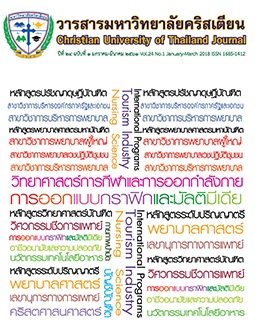การใช้อุปกรณ์ดาม/พยุงขาชนิดยาวในการเพิ่มกำลังกล้ามเนื้อต้นขาในผู้ป่วยอัมพาตครึ่งซีกระยะเฉียบพลัน
คำสำคัญ:
อุปกรณ์ดาม, พยุงขาชนิดยาว, โรคหลอดเลือดสมอง, เข่าทรุด เข่าแอ่นบทคัดย่อ
ปัจจุบันผู้ป่วยโรคหลอดเลือดสมองมีจำนวน เพิ่มมากขึ้นเรื่อยๆ ปัญหาที่พบบ่อยคือเข่าทรุดและเข่าแอ่นทำให้การเดินผิดปกติไปโดยในระยะแรกผู้ป่วยจะมีอาการอ่อนแรงของกล้ามเนื้อขาหรือความตึงตัวของกล้ามเนื้องอและเหยียดเข่าต่ำกว่าปกติจึงเกิดเข่าทรุด ทำให้ผู้ป่วยไม่สามารถที่จะเหยียดเข่าได้ตรงในระหว่างการยืนหรือเดิน และปัญหาเข่าแอ่นมากเกินไปในขณะเดินจะพบในระยะต่อมาเนื่องจากความตึงตัวของกล้ามเนื้อขาบางมัดเริ่ม กลับมา ทำให้ผู้ป่วยสามารถควบคุมการทำงานของเข่าได้บ้างแบบไม่สมดุลดังนั้นการยืน เดิน จึงเป็นเป้าหมายแรก ที่ผู้ป่วยและญาติต้องการการรักษาทางกายภาพบำบัด การใช้อุปกรณ์ดาม/พยุงขาชนิดยาวเข้ามาใช้กับผู้ป่วยระยะแรก โดยอาศัยหลักการดามหรือพยุงให้มีการทำงานที่มั่นคง ของเข่าในขาข้างที่อ่อนแรงการลงน้ำหนักขาทั้งสองข้างจึงใกล้เคียงกัน ทำให้กล้ามเนื้อต้นขามีความแข็งแรงเร็วขึ้นจากการทำงานต้านแรงโน้มถ่วงของโลกเมื่อมีความแข็งแรงของกล้ามเนื้อต้นขาแล้วจะปรับเปลี่ยนจากอุปกรณ์ดาม/พยุงขาชนิดยาวเป็นแบบสั้นเพื่อลดการพยุงกล้ามเนื้อลง ดังนั้นกล้ามเนื้อต้องทำงานมากขึ้นจึงเป็นการเพิ่มความ แข็งแรงของกล้ามเนื้อให้ฟื้นตัวกลับมาได้เร็วอีกทางหนึ่ง
เอกสารอ้างอิง
พรพิมล มาศสกุลพรรณ. ทิพยรัตน์ ศฤงคารินกุล กาญจนา ริ้วทอง พรทิพย์พา ธิมายอม และพรพิมล วิเชียรไพศาล. (2559). แนวทางการฟื้นฟูสมรรถภาพผู้ป่วยโรคหลอดเลือดสมอง. พิมพ์ครั้งที่ 3. กรุงเทพฯ, บริษัท ธนาเพรส จำกัด.
Appasamy, M. De Witt, M.E, Patel, N. Yeh,Nloom, O. & Oreste, A. (2015) Treatment strategies for genu recurvatum in adult patients withhemiparesis: A case series. American Academy of Physical Medicine and Rehabilitation. 7(10), 105-112.
Badke, M. & DiFabio, R. (1990). "Relationship of sensory to balance function in patients with hemiplegia". Physical Therapy.(70), 542-548.
Bleyenheuft, C. Bleyenheuft Y. Hanson, P. and Deltombe, T. (2010). Treatment of genu recurvatum in hemiparetic adult patients: A systematicliterature review. Annals of physical and rehabilitation medicine. (53), 189-199.
Boudarham, J., Zory, R., Genet, F., Vigne, G., Bensmail, D., Roche, N., & Pradon, D. (2013). Effects of a knee-ankle-foot orthosis on gait biomechanical characteristics of paretic and non-paretic limbs in hemiplegic patients with genu recurvatum. Clinical Biomech (Bristol, Avon). 28(1), 73-78.
Bravin, M.P. Nirav, V. & Deepak, G. (2017). Walking ability in stroke patients using knee gaiter and suspended walker for gait training. Journal of Family Medicine and Primary Care. 6(4), 795-797.
Burcu, T. & Zilan, B. (2017). The effect of different ankle and knee supports on balance in early ambulation of post-stroke hemiplegic patients. Neurological Sciences. (10), 3065-3068.
Chin, P. Rosie, A. Irving, M. & Smith, R. (1982). Studies in hemiplegic gait. In: Rose F, ed. Advances in Stroke Therapy. New York, NY: RavenPress.
Colaso, M. Joshi, J. & Singh, N. (1971). Variation of gait patterns in adulthemiplegia. Neurology India. (19), 212-216.
Davidson, I. & Waters, K. (2000). Physiotherapists working with strokepatients. Physiotherapy. (86), 69-80.
De Wit, D.C.Buurke, J.H.Nijlant, J.M.Ijzerman, M.J. andHermens, H.J. (2004). The effect of an ankle-foot orthosis on walking ability in chronic stroke patients: a randomized controlled trial. Clinical Rehabilitation. 18(5), 550-557.
John, D.H. John, W. Michel, J.R. and Fisk. A.A.O.S. (2008). Atlas of Orthoses and Assistive Devices. 4 ed. Philadelphia. Mosby Elsevier.
Karen, J.M. Fabian, E.P. Scott, C.C., Shawn, B. and Patricia, S.S. (2008). Locomotor treadmill training with partial body-weight support before overground gait in adults with acute stroke: A pilot study. Archives of Physical Medicine and Rehabilitation. (89), 684-691.
Kralj, A & Stanic, U. (1993). Enhancement of hemiplegic patientrehabilitation by means of functional electrical stimulation. Prosthetics and Orthotics International. (17), 107-114.
Lew, H.L. Lombard, L.A. Reddy, C.C. Moroz, A. Edgley, S.R, and Chae, J. (2009). Strokeand neurodegenerative disorders: 3. Poststroke rehabilitation. American Academy of Physical Medicine and Rehabilitation. 1(3 suppl), S19-S26.
Morinaka, Y. Matsuo, Y. Nojima, M. & Morinaka, S. (1982). Clinical evaluation of a knee-ankle-foot-orthosis for hemiplegic patients. Prosthetics and Orthotics International. (6), 111-115.
Naito, Y. Kamiya, M. Nakagawa, M. Morishima, N. Ishikawa, T. Ota, S. & Kanai A. (2015). Effect of a custom-made hinged knee brace with assist function for patients with acute stroke. WCPT Congress 2015 Physical Therapy. (1) : Supl 1, 1066-1067.
Padua, L.Doneddu, P.E.Iodice, F.Coraci, D.and Rossini, P.M. (2017). Transfer to inpatient rehabilitation facilities after neurological admission. Neurological Sciences. 38(4), 687-688.
Shurr, D. Harold, M. Jhon, A. and Harley, F. (1978). The Iowa Knee Orthosis. Orthotics and Prosthetics. 35(32), 20-24.
Sigal P, Asaf F, Eitan R, & Isabella S. (2015). Prevention of Genu Recurvatum in Poststroke Patients Using a Hinged Soft Knee Orthosis. American Academy of Physical Medicine and Rehabilitation. (7), 1042-1051.
Stein, J. Bishop, L. Stetin, D.J. & Wong, C.K. (2014). Gait training with a robotic leg brace after stroke: A randomized controlled pilot study. American Journal of Physical Medicine & Rehabilitation. 93(11), 987-994.
Takashi, Y. Ken, A. and Masayuki, I. (2004). Stroke Rehabilitation and Long Leg Brace.Journal Topics in Stroke Rehabilitation. 11(3), 6-8.
Trueblood, P.R, Walker, J.M, Perry, J.& Gronley, J.K. (1989). Pelvic exercise andgait in hemiplegia. Physical Therapy. (69), 18-26.
Weerdesteyn, V. De, N.M. Van Duijnhoven, H.J. & Geurts, A.C. (2008). Falls inindividuals with stroke. Journal of Rehabilitation Research and Development. (450), 1195-1213.
Woolley, S.M. (2001). Characteristics of gait in hemiplegia. Topics in Stroke Rehabilitation. (7), 1-18.
Yamanaka, T. Akashi, K. & Ishii, M. (2004). Stroke rehabilitation and long leg brace. Topics in Stroke Rehabilitation. 11(3), 6-8.



